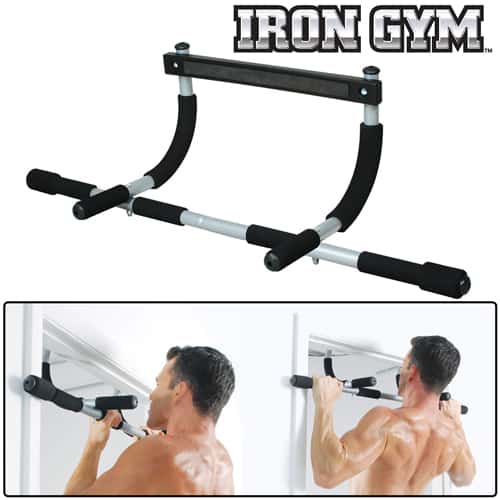
Therefore, to deal with this problem, you need to find an appropriate solution. However, the strength of your door is an unavoidable factor that you have to deal with. You do not have to buy a crazy expensive gym membership as a pull-up bar will support you in almost all of your workouts. Using such bars provides you with the convenience of exercising at home. Pull-up bars play an essential role in several exercises, such as pull-ups or chin-ups, which can help make your upper body strong.

The chances of falling or accidents are also higher if doors are not strong enough.
#IRON GYM PRO FIT PULL UP BAR DIRECTIONS INSTALL#
Although you can easily install them on your doors, you need to consider your door safety. Then you go to The Home Depot and order a new door prehung since the whole thing twat mess and get to pay about 250 bucks for a Fin Carp to come out and fix the mess of a door worth all of maybe 30 bucks.Pull-up bars are the most convenient exercise tool, but they can cause serious damage to your doors if not used correctly. just airspace with 16 gg nails through the doorjamb into the subframe and then more nails usually a combination of 16/16gg pinners through the face of the casing into both the doorjamb and the subframe.Īll that to a hold a margin of gap between door and jamb of about 1/8th of an inch and that on a bevel meaning the bevel short is leading towards the latch of the backstop (the strip that the door closes against).Īnd then apply say 40-50 lbs torque extension (opposite of compression) by a chin up bar and then apply live load to that bar and voila! Door jamb racks, header of jamb separates from stiles (the vertical of jamb), door does not close right, won't lock/latch close right and casing split apart and you wreck the door. The doorjamb is virtually never directly compressed against the subframing and if you're lucky and there was a decent carpenter there MIGHT be shims inbetween the backside of the doorjamb and the subframing but most times no. The doorjamb is a rectangle, the door is another and the subframe (meaning the stud framing within the wall cavity) is another and then the surround of that framing is another. You see the "doorjamb" that you see is only one rectangle in four.

But is not the wood holding the bar rather a mechanical device is trying to support dead and live load by friction/compression force and that up against an unknown strength factor. Since this is a residential challenge I'll leave it to that: the vast majority of doorjambs are relatively thin thickness usually no more than 3/4" and more modern ones made of soft woods such as MDF or FJ pine. Prob here folks is not the door jamb it's the structure of the doorway and let me 'splane that dirt simple in my company we have likely installed 50 thousand doors of every type imaginable of residential/commercial and the theory of doorway more complicated than folks think but really quite easy


General Posting Guidelines (click for more info): No Questions Related to Injury, Pain, or Any Medical Topic Progress Posts Must Be Detailed and Useful Posts Must Be Specific to Physical Fitness and Promote Useful Discussion No Threads That Are Answered by the Wiki, Searching Threads, or Google Welcome to r/Fitness! Click Here for a one-stop shop of our most important resources.


 0 kommentar(er)
0 kommentar(er)
